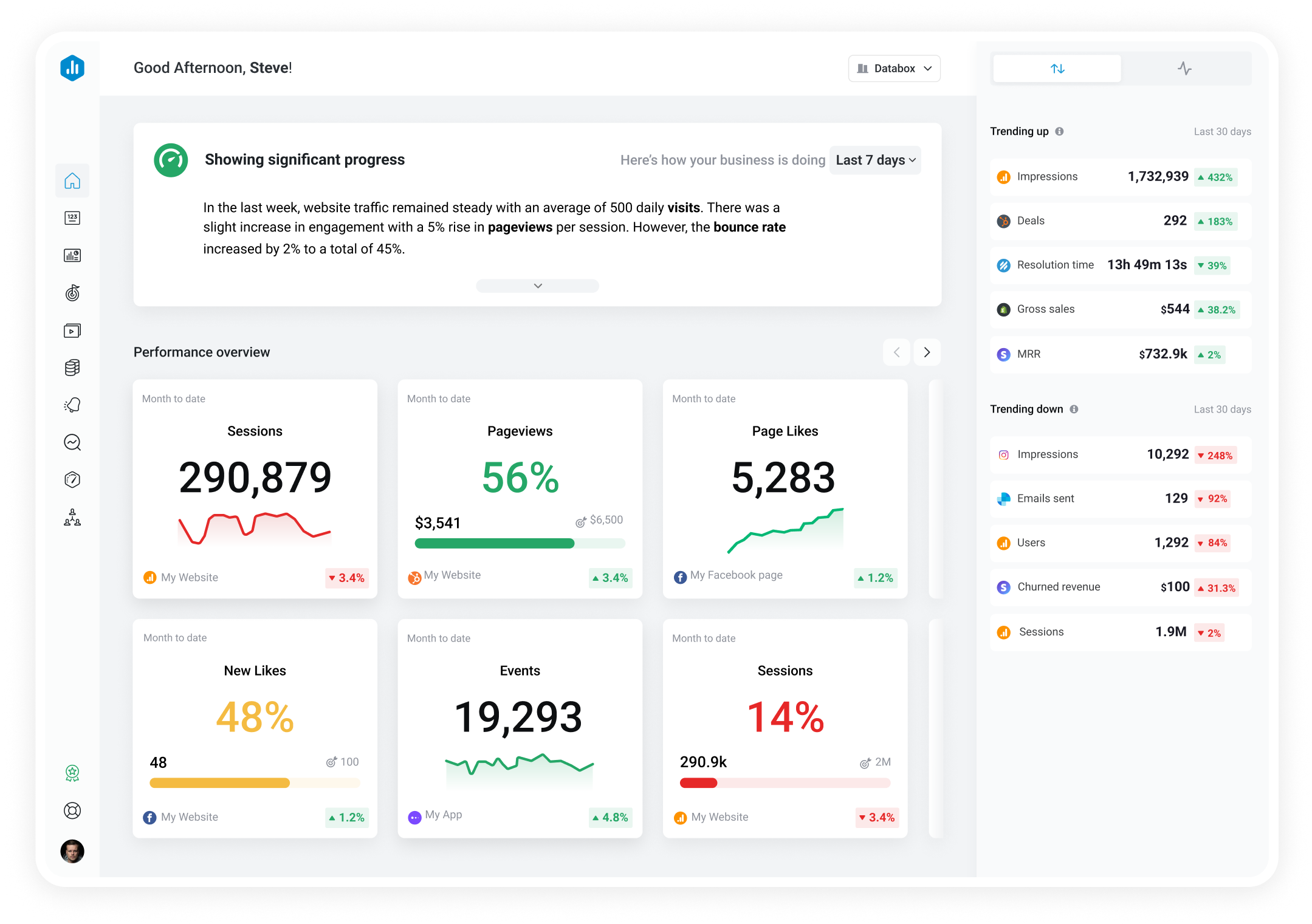Track all of your key business metrics from one screen
GET STARTED
 PayPal
Gross Sales
PayPal
Gross Sales Gross Sales is the total amount of revenue generated by a business before any deductions or expenses. It includes all sales, refunds, and chargebacks.
With Databox you can track all your metrics from various data sources in one place.
Gross sales refers to the total revenue a company generates from the sale of goods or services, before any deductions, such as discounts, returns, or allowances, are taken into account.
It’s the initial amount of money a business has made through its core operations.
Gross sales is one of the key financial metrics businesses look at for a more comprehensive view of their top-line performance.
To calculate gross sales, you need to sum up the total value of all sales made by a company within a specific period.
The formula is straightforward:
Gross Sales = Sales Value of Product/Service 1 + Sales Value of Product/Service 2 + … + Sales Value of Product/Service n
Simply add up the sales values for all products or services to obtain the gross sales figure.
For example, suppose a retail store sells three different products:
To calculate the gross sales for the month, you would add up these sales values:
Gross Sales = $1,000 + $1,500 + $2,000
The gross sales for the given month would amount to $4,500.
Because gross sales is a specific number, there’s really no universal rule on what’s considered good, there are simply too many factors that need to be considered.
For example, small businesses can consider annual gross sales in the range of $150,000 to $1,500,000 as a good amount.
Mid-sized businesses typically have higher gross sales figures due to larger scale. Gross sales in the range of $2 million to $50 million or more can be considered good, depending on the industry and market conditions.
In our Benchmark Groups product, we found that a good gross sales amount for a Shopify store is around $40,000 to $50,000, according to Shopify Benchmarks for All Companies.
Remember that these figures should be interpreted within the context of the specific industry, location, and other factors relevant to your organization.
If you want to stay on top of future trends and be able to instantly compare your performance to companies just like yours (in any given industry), you can join our Benchmark Groups – it’s free for everyone!
There are a lot of moving elements that businesses need to focus on to increase their gross sales, from marketing and customer experience to overall product and service offerings.
Here are some tactics we shortlisted based on our surveys with industry experts:
More resources to help you improve:

Used to show a simple Metric or to draw attention to one key number.

Used to illustrate numerical proportions through the size of the slices.

Used to show comparisons between values.
Databox is a business analytics software that allows you to track and visualize your most important metrics from any data source in one centralized platform.
To track Gross Sales using Databox, follow these steps:
 Goals
Goals Scorecards
Scorecards Metric Digest
Metric Digest Metric Builder
Metric Builder Data Calculations
Data Calculations Performance Screen
Performance ScreenThis dashboard allows you to track all the key metrics for your company, starting from Gross Sales, Shipping costs, PayPal fees, and more.

Gross sales represents the total revenue generated from sales before any deductions, while net sales refer to the revenue remaining after deducting discounts, returns, allowances, and other adjustments.
Yes, gross sales typically include the value-added tax (VAT) or sales tax collected from customers.
